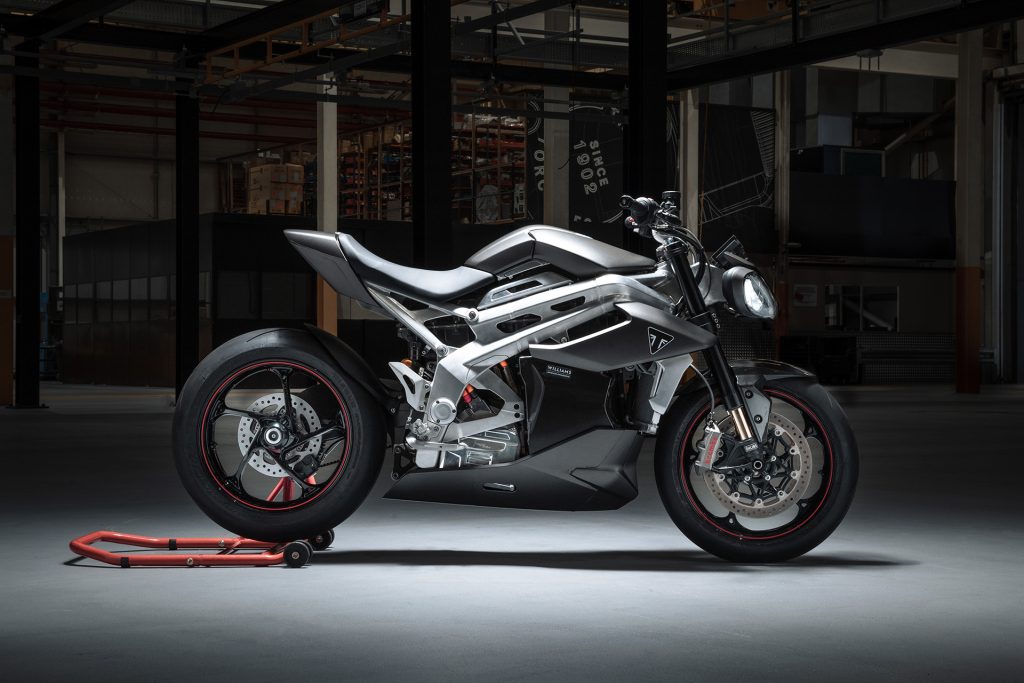Williams Advanced Engineering (WAE) has released images of Project Triumph TE-1, an innovative electric motorcycle prototype, in completed form.
The concept was the product of a unique collaboration between Triumph Motorcycles, Williams Advanced Engineering, Integral Powertrain, and WMG at the University of Warwick that was set up to create ground-breaking developments in specialist electric motorcycle engineering and integrated technology design.
To raise the bar for electric bike performance, efficiency and range, the Project Triumph TE-1 has been fitted with a next-generation lightweight battery and e-powertrain system, designed by WAE.
“The WAE battery pack incorporates dedicated cell packaging for optimum centre of gravity, vehicle control unit, DCDC converter, integrated cooling, charge port, and styled carbon covers,” said WAE in a statement.
The battery system has been designed to allow riders to use more electric power for longer, providing access to higher levels of performance regardless of battery charge.
Project Triumph TE-1 can achieve 130kW of peak power and 80kW of continuous power. Charging it from 0-80% takes just 20 minutes thanks to a 360-volt system.
Now the prototype has been completed, the next stage is a 6-month live testing programme at Triumph’s state-of-the-art facilities.
After this, the prototype will begin active track demonstration where final specifications and testing outcomes will be published, along with insights about range performance.
“It has been truly exciting to see the progress made during phase 3 of Project Triumph TE‑1 with the final prototype motorcycle now going into real life testing,” said Nick Bloor, Triumph’s chief executive.
“Everyone involved at Triumph is proud to have been part of this innovative British collaboration. Personally, I am thrilled with the results we have already achieved with our partners, and the exciting preview of the potential electric future to come.”
Dyrr Ardash, head of strategic partnerships at Williams Advanced Engineering, said: “By working with the team at Triumph, we have continued to push the boundaries of battery technology, keeping the rider in mind at all times. Because we have designed the battery from the ground-up, design has not been compromised and we have been able to maximise the potential of cutting-edge technology, offering both performance and all important, range.”
